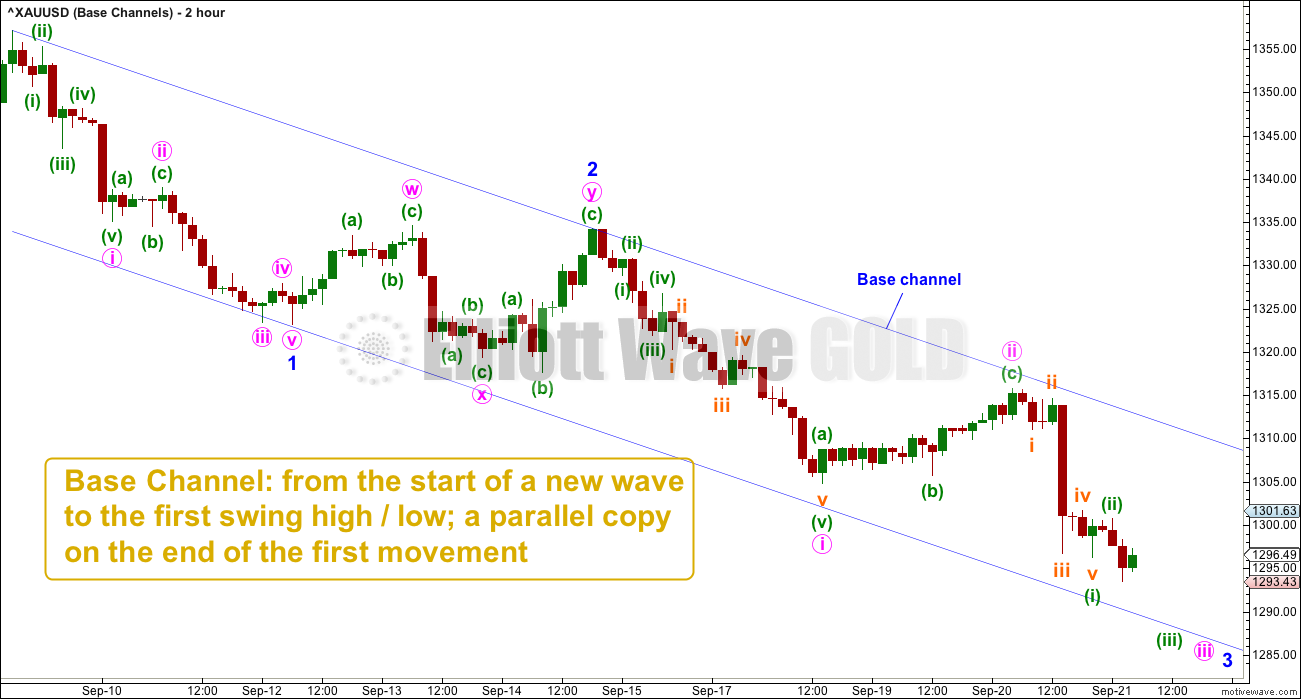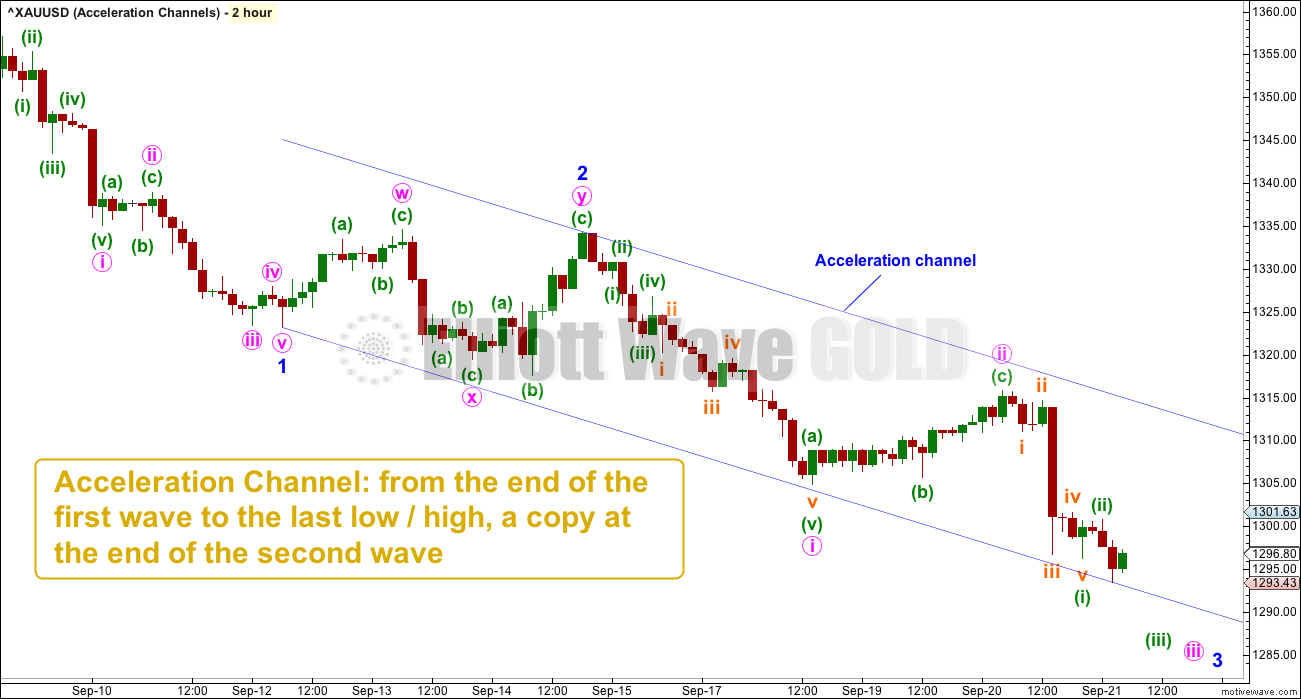2 Early Channel Techniques
1. BASE CHANNELS
This is the earliest channel that can be drawn about a new movement. This channel was drawn at the end of minor wave 2.
Base channels have two main purposes:
1. As the wave progresses the edge which is opposite to the main direction of movement should provide support or resistance. Here, the wave is down and the upper edge should provide resistance to bounces along the way down. It is the opposite for a bull wave; the lower edge should provide support for pullbacks along the way up.
A sloping trend line offering support or resistance can be used to place trailing stops.
2. A third wave may be identified or confirmed if it has the power to break through the base channel in the direction of the trend. A third wave should have the power to break above resistance at the upper edge of a base channel for a bull wave. Here, minor wave 3 should have the power to break below support at the lower edge of the base channel.
2. ACCELERATION CHANNELS
Later on in the development of a wave the base channel may be redrawn as an acceleration channel. This may be done after a third wave shows enough power to break out of the base channel in the direction of the trend, or it may be done earlier.
Acceleration channels are redrawn each time price makes a new extreme in the direction of the trend.
When a third wave is complete, then this channel is an Elliott channel (drawn using the first technique).
Acceleration channels have one main purpose:
1. To show where corrections within the trend find support or resistance, on the side opposite to the trend.
The side opposite to the trend may be used to place a trailing stop when trading the trend.
Published @ 06:22 a.m. EST.


